| Driving up from Duluth to
Grand Rapids the land changes again. We are now moving into mining country,
interspersed with paper making. So here the roadside is lined with spoil
from the iron mines, with the paper birches doing their best to re-colonise
this rather difficult terrain. | 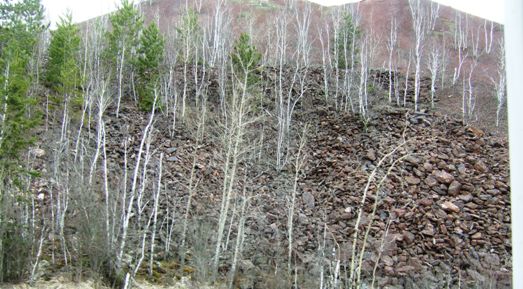 |
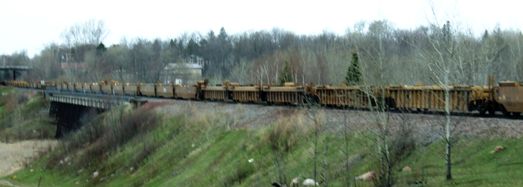 |
Someone has a problem! These are container flats and we found a branch line
being used as a storage siding. There were about 8 miles of wagons. Surely
industry isn't in that much trouble, or else the railroads are not very
efficient? |
| About the only building
in Grand Rapids of any architectural merit is the Old Central School. Today
it houses art/craft shops, elderly support groups, and a small museum. | 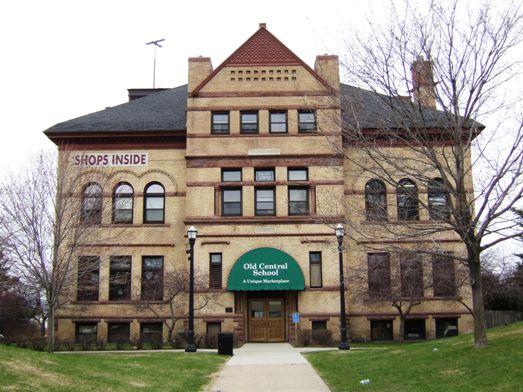 |
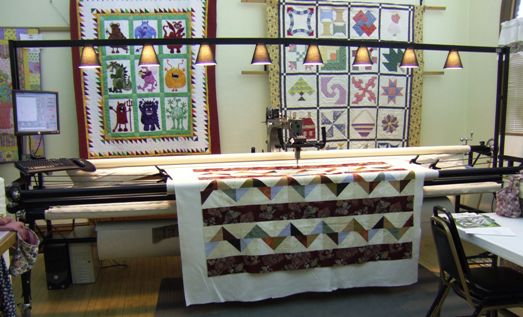 |
I lost Jan in a quilting shop looking at material, but I found this workroom
with a proper quilting machine. This one cost $34,000 and is computer
driven. You put in the stitching pattern you want, and they can be quite
complex, set it up and off you go. Or rather off it goes - you can make the
tea! Quilting is a very popular pastime here, and the design skills shown in
some of the work we have seen mean it is also a serious art form as well. |
| The museum is small but
has an interesting set of collections. These are examples of local native
basketwork. | 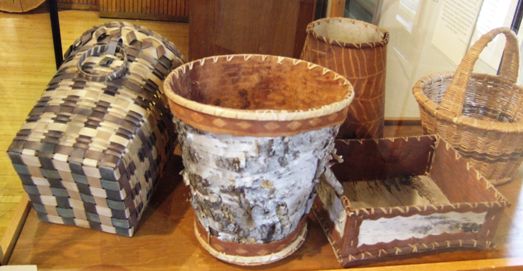 |
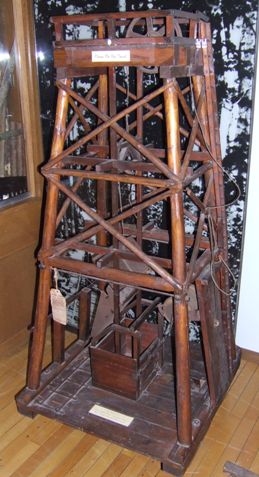 |
The model is of a mine shaft used for drainage. The original mines were
underground, before they realised that the ore was so close to the surface
that open cast was a better way to go. |
| So with the aid of huge
dragline shovels the work proceeded. | 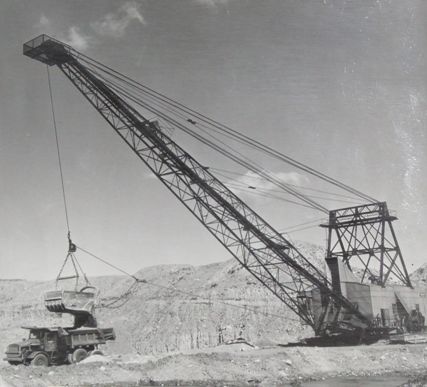 |
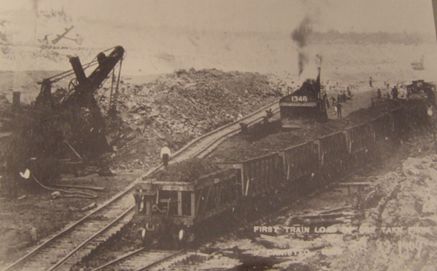 |
The early shovels were steam operated. The operator of shovel 1346 was
legendary for the most ore loaded in a day. |
| The other major industry
is papermaking, a process about which I don't know very much but it does
seem to need lots of water, wood, and machinery. | 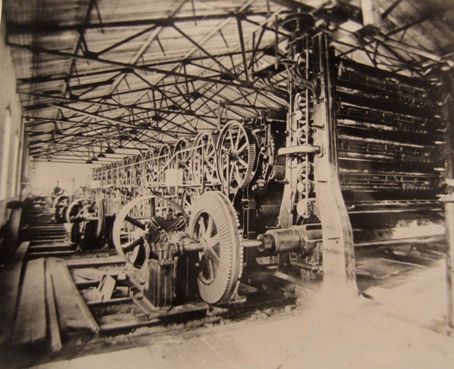 |
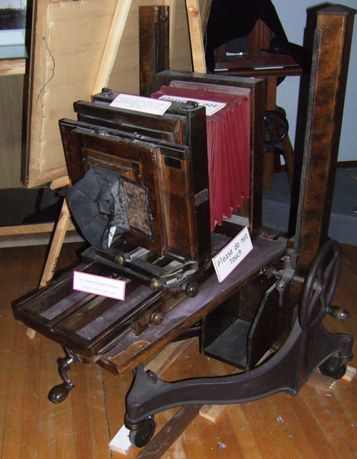 |
The town was also home to a famous photographer of Swedish origins. Eric
Edward Enstrom was born in Sweden in 1875. As a boy he worked cleaning the
studios of the Swedish painter Andres Zorn who had a great impact on his
love of art. The lighting didn't come on in this section which made seeing
much more than this camera quite difficult. |
| There is also a display
devoted to the Minnesotan barn. Such buildings were extremely important for
keeping animals and harvested crops safe in the long hard winters, and were
once a significant item across the landscape, but now they are difficult to
maintain and many are disappearing. I guess the curved roof helps with the
snowfall up here which is prodigious. | 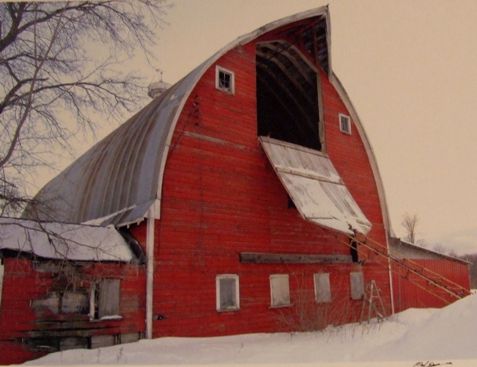 |
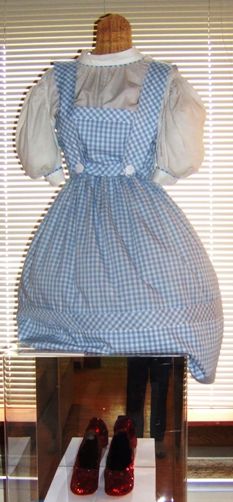 |
The other great person to come from Grand Rapids was Judy Garland. Her real
intelligence I think was to follow the yellow brick road and go south! The
display would be interesting to any fans of hers though. |
| Grand Rapids is totally
dominated by the Blandin Paper Company. Their plant sits at the side of the
river in the centre of town and dominates everything else. Unfortunately we
arrived on a Saturday, and it was closed so there were no tours. | 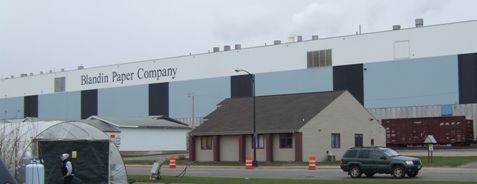 |
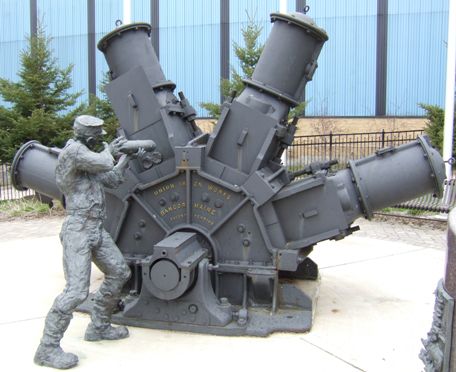 |
We think this is a statue of a pulping machine, one of the first stages in
papermaking. |
| The paper mill was set up
here because the river could be dammed to provide power. This is the highest
navigable point on the Mississippi which actually starts at Lake Itasca a
few miles to the west. Even up here, over 2,500 miles from its mouth on the
Gulf of Mexico at New Orleans, this is a large and powerful river. At the
side of the dam is a fish ladder. | 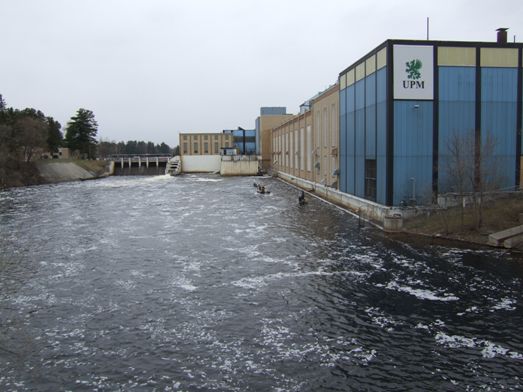 |
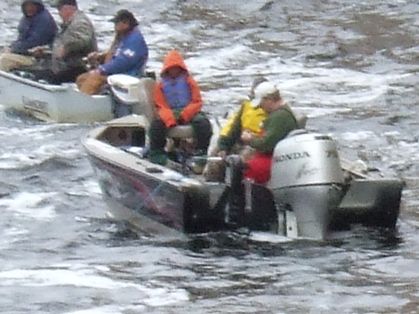 |
Tomorrow may be Mother's Day here, but that is of no consequence in
Minnesota. Today is cold and wet, but they are out there fishing for walleye
as it is the first day of the new fishing season. I'm told it is very tasty! |
|